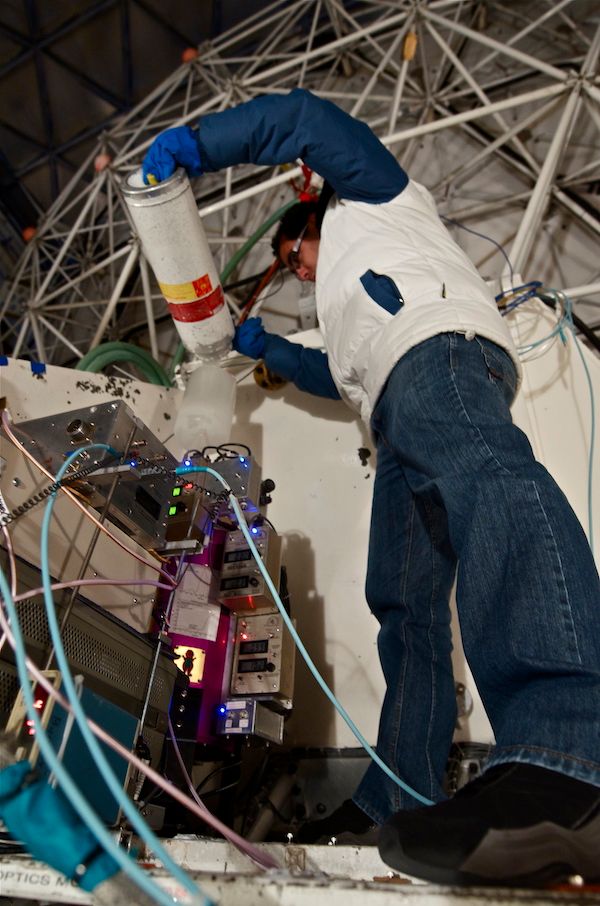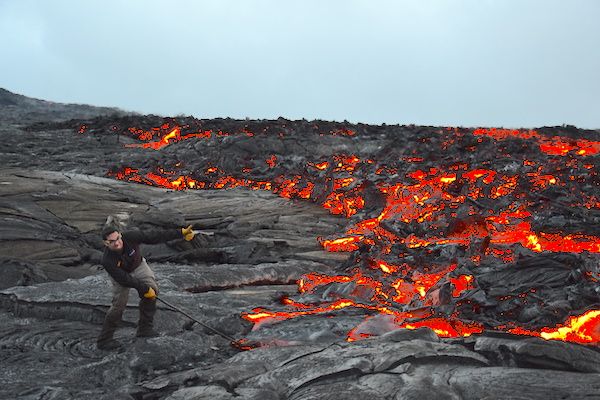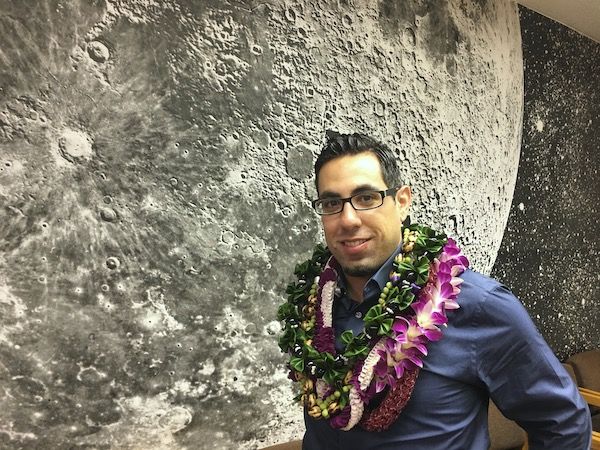Early Career Scientist Spotlight
Dr. Alain SJ. Khayat
Planetary Scientist
Planetary Systems Laboratory
What science questions do you investigate?
Basically, I would like to know everything I could about planet Mars. In particular, I am an atmospheric scientist trying to understand the state of the Martian atmosphere and look for current/past niches for habitability on the red planet. I conduct radiative transfer analysis, or the science of understanding how light interacts with the atmosphere and the surface of the planet. These interactions can tell us a lot about the atmosphere and how it responds to solar radiation. In graduate school, I used ground-based telescopes on Mauna Kea Hawai’i, such as the NASA Infrared Telescope Facility, the Caltech submillimeter observatory, and the James Clerk Maxwell Telescope to rule out the presence of a major volcanic outgassing on Mars by looking for sulfur-bearing molecules in the atmosphere that are indicative of such outgassing. Since moving to NASA Goddard, I expanded my research to include spacecrafts orbiting Mars that continuously return data, in order to measure atmospheric water vapor over the north polar cap of Mars, the major source of atmospheric water on the planet, and understand the water cycle over the north pole, in particular the small-scale processes driving the water sublimation from the cap.

Credit: Alain Khayat
What motivated you to pursue a career in space research?
I always wanted to understand how nature works through the objective eyes of science. Science provides a unified metric to describe nature, independent from the location or time in history when you are born. Science applies everywhere you go, whether here on Earth, around other bodies in our solar system, our galaxy, or at the vast reaches of the cosmos. I wanted to take part of the human contribution to science and decided to pursue a research career here at NASA.
What do you enjoy the most about your job?
Of the things that I enjoy about my job are the beautiful minds I get to meet with at work or outside through conferences or international collaborations. In particular, I enjoy working with our Mars team at NASA Goddard, where we get to share and discuss our science results. I am always reminded by Carl Sagan’s quote on the passion we share for science and discovery: “Your own life, or your band’s, or even your species’ might be owed to a restless few—drawn, by a craving they can hardly articulate or understand, to undiscovered lands and new worlds.”
What are you most excited about in your career?
I am excited about learning new things on a daily basis and making progress, no matter how small the progress is. I also get excited about using several NASA assets to study the atmosphere of Mars, and by that I mean orbiters like the Mars Reconnaissance Orbiter or rovers like Curiosity, or even ground-based telescopes like the NASA Infrared Telescope facility. This is a powerful synergy of assets that would provide a unique monitoring of the environment on Mars.
What science fact consistently amazes you?
I am so amazed by how much one could learn about remote objects in the universe when analyzing the light that is received from them. Other methods include gravity and magnetism for solar system objects but the bulk of the information is from photometry/spectroscopy. It is so fascinating how nature reveals its secrets at different shades of light or wavelengths where every physical process could be studied within a wavelength range.

Credit: Alain Khayat
What is one of your favorite moments in your career so far?
At the time when I was a graduate student in Hawai’i, I was working on my first research projects that involve looking for activity in the comet-asteroid transition object 107P/Wilson Harrington. The object showed a cometary tail when it was first discovered, but it later showed no signs of activity. I collected photometric data to measure the rotational light curve of Wilson Harrington, or the changes in the amount of light received from the object as a function of time. The light curve helps us determine the rotational period of this object. After weeks of work, I was able to display its full light curve and I remember thinking to myself how I was, at that moment, the only person on the planet able to see this behavior “up-close-and-personal”. To me, even with how simple it was, that moment symbolized the process of revealing nature’s secrets one after the other. I continue to look for those moments every day in my life.
What are your future research interests and goals?
I find myself expanding my research to cover the atmospheres of other planets and their moons, and to be more involved in the design and operations of future robotic missions to our solar system under NASA’s leadership.
Biography
Home Town:
Tripoli, Lebanon
Undergraduate Degree:
Diplôme d'ingénieur Mécanique (M. Sc. in Mechanical Engineering). Lebanon
Post-graduate Degrees:
MS, PhD in Astronomy, Institute for Astronomy, University of Hawai’i at Manoa and the NASA Infrared Telescope Facility

